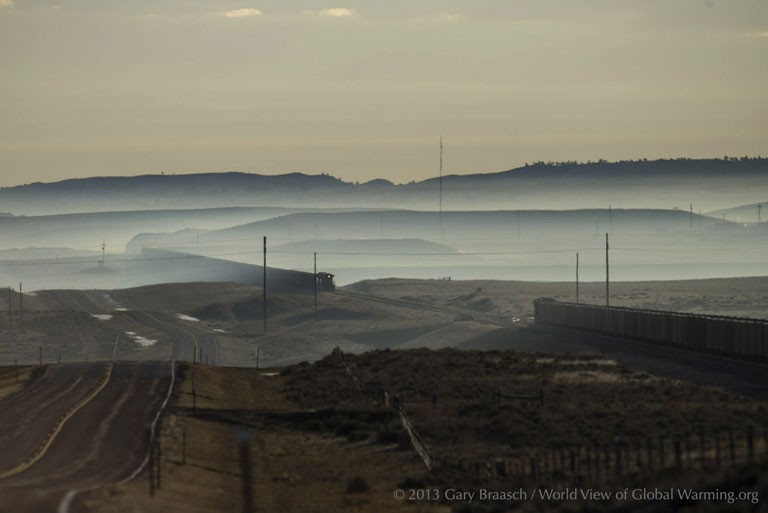Gary Braasch
The broad high prairie of eastern Wyoming and southern Montana was once the bottom of a shallow sea, a rich subtropical swampland for millions of years. Layers of plants began forming peat beds 60 million years ago, later to be buried and compressed into bituminous coal strata.
The Missouri River became the dominant stream as the Northern Rockies formed, with tributaries like the Yellowstone, Powder, and Cheyenne rivers running north and east to meet it. Their erosion eventually left coal seams only a few feet beneath the land surface of what today is called the Powder River Basin.
No other coal seam on the planet is so big, so close to the surface, and so cheap to mine, said Thomas Michael Power, a professor emeritus at the University of Montana who studies energy economics.
Gary Braasch
A national debate
Today the massive deposits, enough to light the United States almost into the 23rd century, have become the center of a regional — and increasingly national — debate: Should this resource continue to be... Read more
